I know this is going to sound impossible or even daunting, but you can actually train a puppy at home and I am going to show you how.
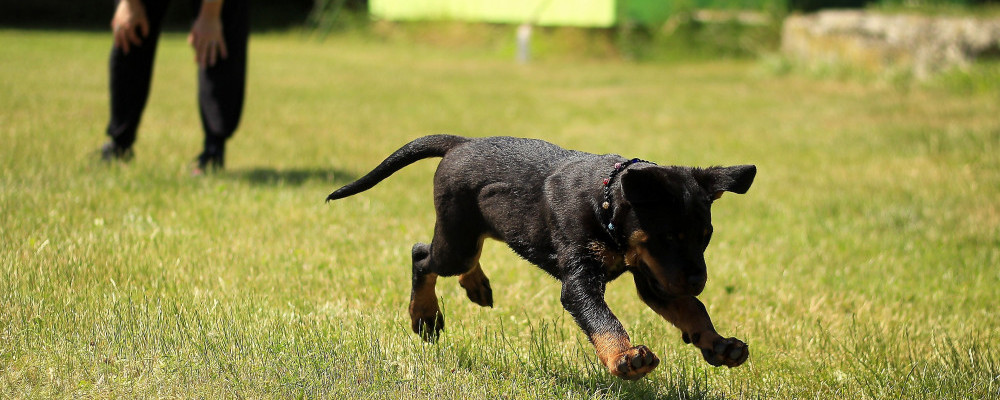
The one misconception is that “puppy training” is easier if left to a trainer, but the reality is that by doing this you miss out on the fun, enjoyment, and laughter you get when doing it yourself.
I want to walk you through some of the misconceptions that people have about training their puppy themselves and the things you can do.
First things first though.
Puppy Preschool V Puppy Home-school
Many animal behaviorists are strongly recommending owners enroll in Puppy preschool to give their puppies the very best start in life and the chance to grow into well-behaved and socialized dogs.
Puppy preschools are normally held at your local vet and I think the biggest advantage with the preschool is socializing. Because the vet clinic is a sterilized environment it is safe for your puppy to interact with other puppies free from the risk of developing Parvovirus.
Unlike dog training classes for older dogs, puppy schools are specifically designed for puppies 8 to 18 weeks of age.
I believe this is a critical age for puppies who are programmed to develop their socialization and behavioral skills at this age. This is the time a puppy would be beginning to explore away from the litter and develop these skills.
A well-behaved pet is a happy pet and this 8 to 18 week age is the most important stage of your puppies life. This is the time when the foundations of behavior and socialization are developed. Not doing so can adversely affect them later on in life.
I have owned and worked with dogs for over 50+ years and I agree there are some benefits to having your puppy attend a preschool for his earlier weeks.
Homeschool after this initial time will be just as effective and a lot of fun for you and your dog.
Equipment & Management
The first things that you want to do if you are going to home school your puppy is find an area and block it off with a puppy gate, alternatively if you choose to crate train you pup (We have another article on crate training) the crate will be that area.
When finding the area make sure it is a quiet and calm place to allow your puppy to settle in when it arrives home.
Make sure to set up a crate with soft bedding, water and food bowls and some toys.
Toilet Training
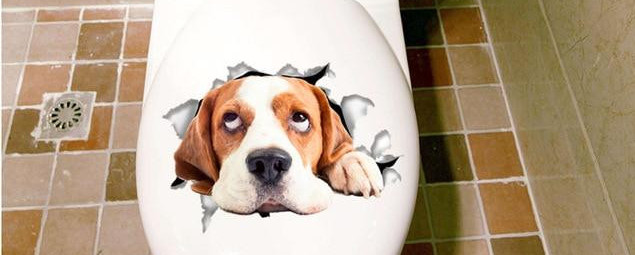
You need to be prepared for accidents as they will happen!
Many people believe in the use of puppy pads or newspaper while your pup is learning, something I am not a big fan of. Using this method will teach them as they get older that anything on the floor that resembles a newspaper or pad is OK to pee on.
Puppies Are Most Likely To Want To Pee:
- When waking up: Make sure that you always take them out as soon as this happens to the outside area you want them to go.
- After playing
- After eating
When puppies are young they may need to go in the middle of the night. This is where I find crating is very useful as a puppy will very rarely pee in his own sleep area.
As long as the crate is only big enough for your puppy to turn in and stretch you will more often than not find a puppy will sleep most of the night with no accidents.
If accidents do happen NEVER punish your pup, instead give your pup heaps of praise and a treat when they do go in the right place. The idea of a treat and praise will soon have your dog knowing where to go for a pee.
Another thing I have found to be very successful when training pups is to set a toilet routine and use a word like “Wee Time” when I have taken them to the outside area i have decided will be their wee area.
Puppy Socialisation
If you chose to enroll your puppy into an early preschool class at your local vet for between the ages of 8 – 18 weeks, their socialization doesn’t stop there. Continuing with your socialization will help your pup to be calm and polite around other unknown dogs and puppies.
This will make sure they grow into a social dog in the future.
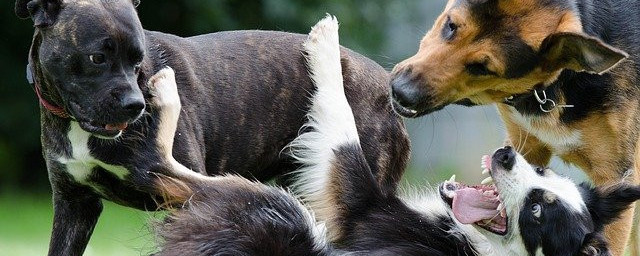
Understanding Body language
Have you ever watched dogs together? They have their own unique way of communicating with each other and it is all through their body, unfortunately us humans are not always the best at reading or understanding the same way. This can lead to unwanted behaviors.
As a general rule if the dogs body is loose and relaxed then the dog is calm and willing to interact with you.
However, if you notice the dog’s body becoming tense, if they freeze or move away then they are not comfortable with the situation so it’s best to not interact with the dog at this time instead give the dog space.
If your pup starts to feel uncomfortable or stressed you are likely to see some of the signs below:
- Yawning when not tired
- Half-moon eye (this means you can see the whites of the outer edges of your dog’s eyes)
- Lip licking when not eating food
If these signs are ignored, your pup may start growling as a further warning that it is not comfortable and wants to be left alone. ALWAYS remove children from these situations and ensure the dog has space and time to become more relaxed and comfortable.
The Development Stages
As pups grow they go through a few ‘fear’ stages where their behavior will change.
This normally happens around 9 months and again at 18 months. It is important to continue with their training so the pup receives consistency during these periods which will help them and you through these stages.
Life Long Learning
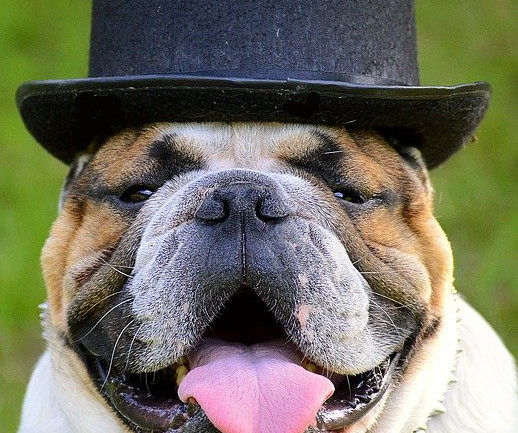
As your pup’s new owners it’ll be beneficial to learn positive reinforcement training methods which includes knowing what you want your pup to do and rewarding it whenever they do what you want. It also includes replacing unwanted behaviour with more positive activities such as:
- If you don’t want them sitting on the bed, praise & reward them for sitting somewhere else (eg their bed or mat)
- If you don’t want them to jump up at guests, praise and reward them every time they sit calmly when meeting anyone.

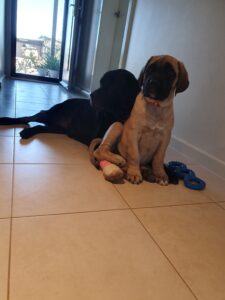
This is a very helpful topic! Having owned more than six dogs over my lifetime, I agree that every puppy can be trained. In my opinion, it takes a lot of patience and the right temperament. ~smile~ I like your advice about keeping children away from situations with dogs that may be aggressive – very good advice. There is a lot of useful information on your site. I wish you the best of luck with your endeavor. Thanks, CherrieAlesia
Thanks Cherrie and its great to me a fellow dog lover.
Hello,
I enjoyed your page on puppy training. You seem to be very knowledgeable about the topic.
I have cats primarily, but in my younger years, I had many dogs as pets. Presently I have a dog that seems to enjoy running back and forth instead of being calmer. It drives my fiancee crazy. He also likes to jump up lots, and although we partially trained him when he was smaller, he doesn’t always respond when told to sit or other commands.
Recently he took to digging holes. He is an outside dog. A friend told us that if he has a toy, he will stop doing that. Is this true? Anything you can share to shed some light is very much appreciated.
Best wishes, Nyny
Hi Nyny,
I am glad you enjoyed my post on puppy training.
Digging holes can be a boredom related issue. I am not sure how much time you spend with your dog outdoors? Company and interaction are key things to keep your dog happy and remove any boredom.
How often does he get out for exercise/walks?
Your friend is also correct, however if none of the above are being done regularly toys will only work for so long.
As as a last resort you could maintain a certain area for digging, however while this method can safe the rest of your garden it doesnt remove the habit.
Hi there
I had no idea that there was a puppy preschool. It is a good idea to socialize the puppy and especially in a controlled and sterilized area like the vet. I agree with you as I did not get our toy poodle to puppy training and so she is really not good with other dogs and growls at them and therefore I have to be so careful when I take her to the park for walks.
I like your advice for toilet training that one should give a lot of praise for the right thing and not punishment for mistakes.
Interesting article and your passion for the subject is a joy to read.
thank you
best wishes Sheen
Thank you Sheen, and I am so glad you got some value from this article.
Thanks
Mark
Hi Mark, I love this informative article. I never know how to properly train my pup. All I know is from Cesar Millan and I’ve tried to put it into practice. Body language, training and behaviour all are related to his/her growth. Thank you for this knowledge and for reminding me how to do it if I will get or get a puppy as a present.
My pleasure. And yes Cesar Millan is a very good dog trainer.
Wish I read something like this when my family got a dog. Lots of helpful tips that would have helped raising our dog. She is a great dog but I think some of behaviour could a been changed had we setup the house with a puppy corner and slowly conditioned the puppy instead of being more relaxed which I think is because we usually had cats so it was more hand off.
Thanks for your comments Duncan.
It is so true that the earlier we start training our puppy the more instilled this will become as they grow older.
What kind of dog do you have?
Hi. Thanks for this article. It was a pleasure reading it!
Wow, there are tips and tricks on how to train a puppy at home?? I had no idea. I am thinking of buying a puppy nowadays and while making a budget, I was considering the training costs which are really expensive in my city. I was gonna drop the idea of a puppy but this article changed my mind!
Best regards,
Dominique
Hi Dominique,
I am so glad this article has changed your mind about getting a puppy!
Training a puppy at home can be so much fun and the results you get are so rewarding.
Feel free to reach out if ever you need help with anything.
Woof Woof
Mark
Having ouppies in pre school is the best way to geturpuppies arted in life. I find it challenging to teach them all the basics at home. Specially now that most of us have moved work from the office to our homes. Finding free time to actually teach our puppies ms hard, even after reading your post.
Hi Ann,
Yes the work from home situation has definitely increased in the past 12 months, for myself included. However I have found it gives me more time with my dogs and as such probably get more regular training than they did before haha.
Remember we only need to find 10 – 20 minutes a day to achieve what I call repetitive training.
Woof Woof